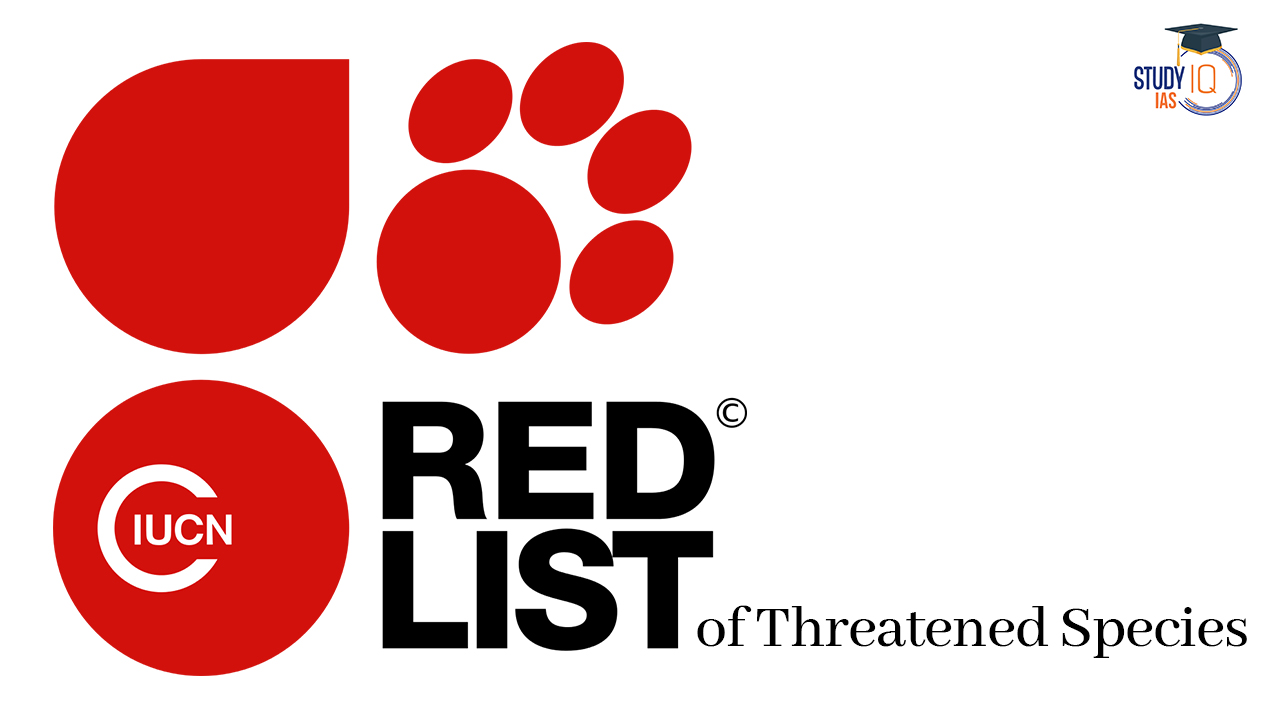Table of Contents
IUCN Red List of Threatened Species
The IUCN Red List of Threatened Species stands as a beacon in the realm of conservation biology, offering a systematic approach to assessing the extinction risk faced by plants, animals, and fungi worldwide. Created and maintained by the International Union for Conservation of Nature (IUCN), this invaluable resource provides a standardized framework for evaluating the conservation status of species and informing conservation actions. This article aims to delve into the intricacies of the IUCN Red List, exploring its history, methodology, significance, and impact on global conservation efforts.
IUCN Red List Overview
|
IUCN Red List Overview |
|
| Purpose | The IUCN Red List serves as a critical indicator of global biodiversity health, informing conservation actions and policy changes necessary for preserving natural resources. |
| Information Provided | Provides detailed data on species’ range, population size, habitat, ecology, use/trade, threats, and conservation actions, aiding in conservation decision-making. |
| Users | Government agencies, wildlife departments, NGOs, natural resource planners, educational organizations, students, and the business community rely on the Red List for conservation planning. |
| Process | Involves collaboration among IUCN staff, partner organizations, and experts in compiling species information. |
| Coverage | Several species groups, including mammals, amphibians, birds, reef-building corals, and conifers, have been comprehensively assessed. Continuous assessment and re-assessment are conducted to track changes in species status. |
| Current Status | Over 157,100 species are listed on the Red List, with more than 44,000 threatened with extinction. Notable percentages of species within various groups are threatened, highlighting the urgent need for conservation efforts. |
| Conservation Efforts | Despite high proportions of threatened species, efforts are underway to reverse or halt biodiversity decline. Increased assessments are aimed at expanding the Red List’s coverage to at least 160,000 species to enhance conservation decision-making. |
| Impact | The Red List aids in identifying species requiring targeted recovery efforts and highlights key sites and habitats for protection. It guides future conservation and funding priorities, contributing to global biodiversity conservation efforts. |
We’re now on WhatsApp. Click to Join
History of IUCN Red List
The genesis of the IUCN Red List can be traced back to the 1960s when concerns about the escalating rate of species extinctions prompted conservationists to seek a comprehensive method for assessing the status of biodiversity. In 1963, the IUCN established its Survival Service Commission, which laid the groundwork for what would later become the Red List. Over the decades, the Red List evolved from a rudimentary checklist to a sophisticated assessment tool, thanks to advancements in scientific knowledge, technology, and collaboration among experts worldwide.
Methodology For IUCN Red List
At the heart of the IUCN Red List lies a rigorous methodology for evaluating the extinction risk faced by species. The assessment process involves gathering and analyzing data on various factors influencing a species’ survival, including population size, habitat loss, distribution, reproductive rates, and threats such as climate change, habitat degradation, overexploitation, and invasive species. This information is then used to assign each species to one of several categories reflecting its level of extinction risk, ranging from Least Concern to Extinct.
The IUCN’s conservation strategy operates through a four-step approach:
| Conservation Strategy |
Description |
| Assess | Focuses on monitoring species and providing comprehensive information on the status and trends of biodiversity, enabling informed conservation decisions. |
| Plan | Aims to develop collaborative and science-based strategies to enhance the effectiveness of species conservation efforts, ensuring that conservation actions are well-coordinated and impactful. |
| Act | Mobilizes actions aimed at improving biodiversity status, involving governments, educational institutions, civil society, and the private sector in implementing conservation measures and initiatives. |
| Communicate | Enhances the effectiveness of conservation work through targeted and strategic communication efforts, ensuring wider dissemination of information and engagement with biodiversity conservation. |
Categories and Criteria for IUCN Red List
The IUCN Red List employs a set of objective criteria to classify species into different categories based on their conservation status:
| Red List Category | Description |
| Extinct (EX) | No known individuals of the species remain alive. |
| Extinct in the Wild (EW) | The species survives only in captivity or as a population introduced outside its historic range; it is no longer found in the wild. |
| Critically Endangered (CR) | The species faces an extremely high risk of extinction in the wild due to factors such as habitat loss, overexploitation, or other threats. Immediate conservation action is needed to prevent its extinction. |
| Endangered (EN) | The species is at a high risk of extinction in the wild due to factors such as habitat loss, overexploitation, or other threats. Urgent conservation measures are required to prevent its disappearance. |
| Vulnerable (VU) | The species is at high risk of endangerment in the wild due to factors such as habitat loss, overexploitation, or other threats. Conservation efforts are needed to prevent it from becoming endangered or extinct. |
| Near Threatened (NT) | The species is likely to become endangered in the near future if the factors causing its decline continue. It does not currently qualify for a threatened category but is close to qualifying. Conservation action may be necessary to prevent its decline. |
| Least Concern (LC) | The species is widespread and abundant, with no immediate threat of extinction. It does not currently qualify for any threatened category. |
| Data Deficient (DD) | Insufficient data are available to assess the risk of extinction for the species. More research and data collection are needed to determine its conservation status. |
| Not Evaluated (NE) | The species has not yet been evaluated against the IUCN Red List criteria for determining its conservation status. |
Significance and Impact
The IUCN Red List serves as a vital tool for conservation planning, policy development, and resource allocation at global, national, and local levels. It helps identify priority species and ecosystems for protection, guides the establishment of protected areas, informs species recovery programs, and raises awareness about the biodiversity crisis. Moreover, the Red List contributes to scientific research by providing valuable data for monitoring trends in species populations and identifying emerging threats.
Challenges and Future Directions
Despite its invaluable contributions to conservation, the IUCN Red List faces several challenges, including data gaps, taxonomic uncertainties, and limited resources for assessments. Addressing these challenges requires continued collaboration among scientists, policymakers, and stakeholders, as well as increased investment in biodiversity monitoring and research. Looking ahead, the Red List must adapt to emerging threats such as climate change, habitat fragmentation, and wildlife trafficking to remain relevant in an ever-changing world.
List of Critically Endangered Species in India as per IUCN Red List 2019-2022
| Category | Species |
| Critically Endangered Mammals | Pygmy Hog, Andaman White-toothed Shrew, Jenkin’s Andaman Spiny Shrew, Nicobar White-tailed Shrew, Kondana Rat, Large Rock Rat or Elvira Rat, Namdapha Flying Squirrel, Malabar Civet, Sumatran Rhinoceros, Javan Rhinoceros |
| Critically Endangered Birds | Aythya Baeri, Forest Owlet, Great Indian Bustard, Bengal Florican, Siberian Crane, Spoon-billed Sandpiper, Sociable Lapwing, Jerdon’s Courser, White-backed Vulture, Red-headed Vulture, White-bellied Heron, Slender-billed Vulture, Indian Vulture, Pink-headed Duck, Himalayan Quail |
| Critically Endangered Reptiles | Gharial, Hawksbill Turtle, River Terrapin, Bengal Roof Turtle, Sispara day gecko |
| Critically Endangered Fishes | Pondicherry Shark, Ganges Shark, Knife-tooth Sawfish, Large-tooth Sawfish, Narrow-snout Sawfish |
IUCN Red List UPSC
The IUCN Red List stands as a cornerstone of conservation science, providing a standardized framework for assessing the extinction risk faced by species worldwide. By shining a spotlight on species in need of conservation action, the Red List plays a crucial role in safeguarding biodiversity for future generations. However, its effectiveness ultimately depends on collective efforts to address the underlying drivers of extinction and ensure the long-term survival of Earth’s diverse array of life forms.


 Climate Migration in India, Challenges a...
Climate Migration in India, Challenges a...
 India’s Carbon Credit Trading Scheme, ...
India’s Carbon Credit Trading Scheme, ...
 Indian Rhinoceros, Conservation, Threats...
Indian Rhinoceros, Conservation, Threats...





















